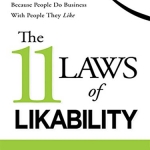Blog Content Writing – Up For the Count
One “fake fact” included in Alex Palmer’s book Alternative Facts is that part of the reason Charles Dickens’ novels ran so long is that he was paid by the word. Truth is, while his novels’ length was often dictated in advance, Dickens’ earnings were pegged to the number of novels sold.
Today, some professional writers for hire choose to charge based on word count or page count, while other ghostwriters prefer to charge flat project rates or hourly fees, varying by experience, subject matter and location, Brafton, a leading UK content marketing company explains.
As much as we all wish for it, there is no simple answer to the question “What is the right length of a blog post?” A longer blog post doesn’t necessarily rank better than a short one. The reason search engines generally appear to favor longer posts is because they are detailed, hence considered to be providing more information to readers. But, when writing blogs, one needs to consider the topic, the goal, the target audience, the industry, and the competition to find which length works best. Focus should be on quality, not quantity.
You know your business and your customers better than anyone else, so why would you hire a ghostwriter to take over such an important task as blogging? There are plenty of reasons, Shandra Cragun of BKA Content explains:
- You lack the time to write lengthy, informative blog posts.
- Writing isn’t your strong suit.
- The content creation process overwhelms you.
- You want to elevate your brand’s story with well-written and highly engaging content.
In terms of word count, Cragun observes, there are some topics for which only so much can be said, while there are others about which a lot more can be said. Don’t give a ghost blogger a word count request that far exceeds the collective information on the subject, she cautions.
Opinions have always differed on the optimal size for a blog post. Having composed blog posts (as both a Say It For You ghost writer and under my own name) numbering well into the tens of thousands, I’m still finding it difficult to fix on any rule other than “It depends!”
Chip and Dan Heath’s book The Power of Moments describes research that found that when people assess an experience, they tend to forget or ignore its length, instead rating the experience based on the “peak” (best or worst moment) and the ending. My conclusion about word count? As Albert Einstein famously said, “Make everything as simple as possible, but not simpler.”






Follow us online!